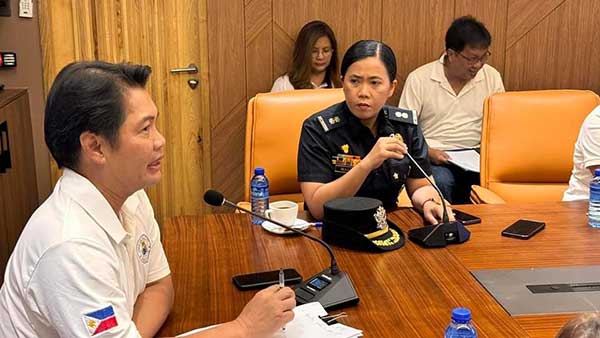
By Glazyl Y. Masculino
BACOLOD CITY – The city government will form a task force to monitor and develop plans to reduce the number of fire incidents, particularly focusing on the 195 puroks identified as red zones.
Mayor Alfredo “Albee” Benitez met with the Bureau of Fire Protection (BFP)-Bacolod and other concerned agencies at the Bacolod City Government Center (BCGC) to discuss effective interventions on fire safety, following two residential fires in the city last week.
Among these interventions are upgrading communication lines, installing fire extinguishers and alarm systems, implementing crowd control management, and continuous information campaigns on fire safety and prevention.
Benitez noted that red zones are hard-to-reach areas with no applied regulations for fire safety. “These areas do not follow safety standards because informal settlers have no proper regulations for fire safety. They use light materials and just do what they want,” he said.
In a press briefing, Benitez said they’re identifying red zones and tasked Councilor Pao Sy, head of the Committee on Fire, Social Defense, and Natural Disasters and Public Works of the Sangguniang Panlungsod (SP), to take the lead. “As of today (August 5), 195 have been identified as red zone areas, but we are still counting,” he added.
Benitez projected that the number might exceed 200 red zones in the city, which should be prioritized to ensure proper safety measures are implemented.
Benitez mentioned that one major concern for safety measures is land ownership. Since informal settlers don’t own the land, they cannot comply with proper safety regulations. The city will discuss this with lot owners to see if they can cooperate with the city’s plan to provide safety measures to prevent fires. “If we don’t address this, we will continue to have fires,” he added.
Nearly 100 families were left homeless in two residential fire incidents that happened in Purok Kagaykay, Barangay 2, on July 31, and Purok Kingfisher, Barangay 16, on August 1.
Fire Superintendent Jenny Mae Masip, city fire marshal, said that Purok President Alejandro Tiad passed away in a private hospital last Sunday due to severe injuries sustained three days after the fire in Barangay 16 on August 1. Tiad was rescued by firefighters after being trapped when he returned to his house to ensure the safety of his children but did not survive.
“We cannot sweep under the rug that these areas are fire hazards. We have to do something,” Benitez said.
Benitez emphasized the need to establish alarm and communication systems in each purok for more efficient coordination with fire responders. He pointed out that BFP hotlines are currently reachable only by landline, making it difficult for people to seek assistance as most use cellular phones. The city will provide 10 cellular phones for the BFP and its substations to ensure a reliable communication line.
Benitez also mentioned the difficulty of fire trucks and equipment accessing fire scenes due to narrow pathways and road obstructions. He highlighted the importance of the time element in fire response and suggested that fire extinguishers should be placed in each red zone purok. Crowd control is also part of the solution to prevent casualties during fires.
According to the BFP, the top causes of fire incidents are electrical ignition, followed by cooking and overheated home appliances.
“We’re planning to rectify this as part of our strategies to prevent future fires,” Benitez said.
Benitez expressed satisfaction with Masip’s handling of the situation and called on barangays to help the city implement mitigating measures against fire incidents and educate their constituents on fire safety.
Councilor Lady Gles Pallen said that currently, 10 out of 61 barangays have community fire auxiliary groups (CFAGs) that can serve as first responders. Ideally, one purok should have one CFAG with 10 to 20 volunteers. Pallen hopes that by the end of the year, all barangays will have CFAGs. She added that barangay watchmen could be utilized for crowd control as they have been trained for such situations.



















